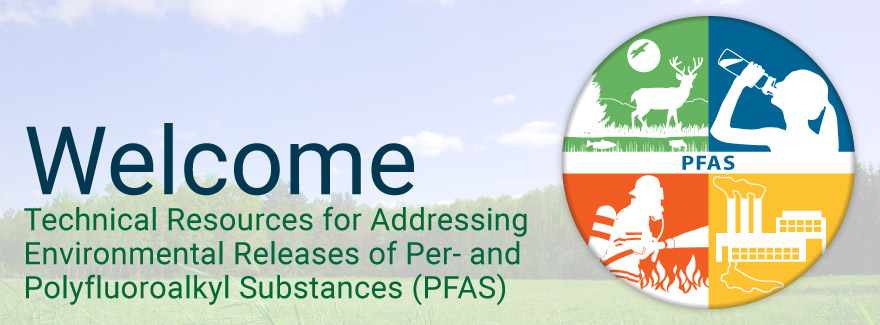
PFAS HOME
This Interstate Technology and Regulatory Council (ITRC) online document includes the resources that the ITRC PFAS Team has developed since it began work in 2017.
- PFAS Fact Sheets
- PFAS Technical and Regulatory Guidance Document
- Training Resources
You can reach this PFAS Home page from any of the pages on this web site with the Home button at the top of screen.
PFAS Technical and Regulatory Guidance Document
The last full update of this document was September 2023.
⇐ ONLINE DOCUMENT: On this web page, use the Table of Contents shown in the left-hand navigation column to select a specific section of interest
- Full Guidance Document PDF
- Find the References, Glossary and Acronyms with these links or at the footer of the web
External Data Tables
In many of the sections of the PFAS Guidance Document the team has developed tables that provide additional data and information to support the topics in the sections. These tables are linked here, along with identity of the section with which the table is associated.
-
- Fact Sheets: PFAS Water and Soil Regulatory and Guidance Values Table Excel File
- Fact Sheets: PFAS Air Criteria Table Excel File
- Section 2: Figure 2-5 Expanded PFAS Family Tree PDF
- Section 2: USEPA Analytes List-PFAS Classifications PDF
- Section 3: AFFF Characteristics Excel File
- Section 3: AFFF Transition to F3 Case Studies Excel File
- Section 4: Physical and Chemical Properties Table 4-1 Excel File
- Section 5: Aquatic Organisms BCF-BAF Table 5-1 Excel file
- Section 5: Plants BCF-BAF Table 5-2 Excel File
- Section 8: PFAS Regulatory Programs Summary Excel File
- Section 11: Analytical Methods Excel File
- Section 11: PFAS Data Usability Table PDF
- Section 12: Table 12-1 Treatment Methods Table Excel File
- Section 12: Integrated Water Treatment Flow Chart PDF
- Section 14: Risk Communication Social Factors Vision Board PDF
- Section 15: Water Treatment Case Studies Excel File
- Section 17.1: Table 17-1 A-C for Air PDF
- Section 17.1: Table 17-2 A-C for Soil, Sediments, and Biosolids PDF
- Section 17.2: Table 17-8 Toxicological Effects Excel File
Archived External Tables and Sections
These resources are no longer being updated.
-
- Fact Sheets: Basis for PFOA and PFOS Regulatory Values in Drinking Water Table Excel File
- Section 6: Media-Specific Occurrence PDF
- Section 7.2: Ecotoxicology Data Summary Excel File
- Section 12: Table 12-1 Liquids Treatment Methods Table PDF
- Section 12: Table 12-2 Solids Treatment Methods Table PDF
- Section 17-1: Additional Information for Media-Specific Occurrence PDF
Training Resources
Quick Explainer Videos
The PFAS Team developed brief explainer videos to accompany the fact sheets. The following links will redirect you to ITRC’s PFAS Explainer Videos on YouTube:
Longer PFAS Training Module Videos
The PFAS Team developed training module videos to accompany this Technical and Regulatory Document. The following links will redirect you to ITRC’s PFAS Training Module Videos on Youtube:
PFAS Training on Clu-In
Archived Round Table Sessions
The PFAS Roundtable Sessions offered a unique opportunity to interact directly with PFAS experts from around the country on a different group of topics for each session. Each Roundtable is archived for On Demand listening and includes a Q&A Digest of all questions asked for the event, including those that were not addressed during the live class.
-
-
- Roundtable Session 1 – Naming Conventions, Sampling and Analytical Techniques, and History and Uses of PFAS (July 2020)
- Roundtable Session 2 – Physical & Chemical Properties, Site Characterization, Fate and Transport (October 2020)
- Roundtable Session 3 – AFFF and Treatment Technologies (April 6, 2021)
- Roundtable Session 4 – Human and Ecological Health Effects, Site Risk Assessment, Regulations, Risk Communication and Stakeholder Perspectives
-
Published by the Interstate Technology & Regulatory Council, September 2023


